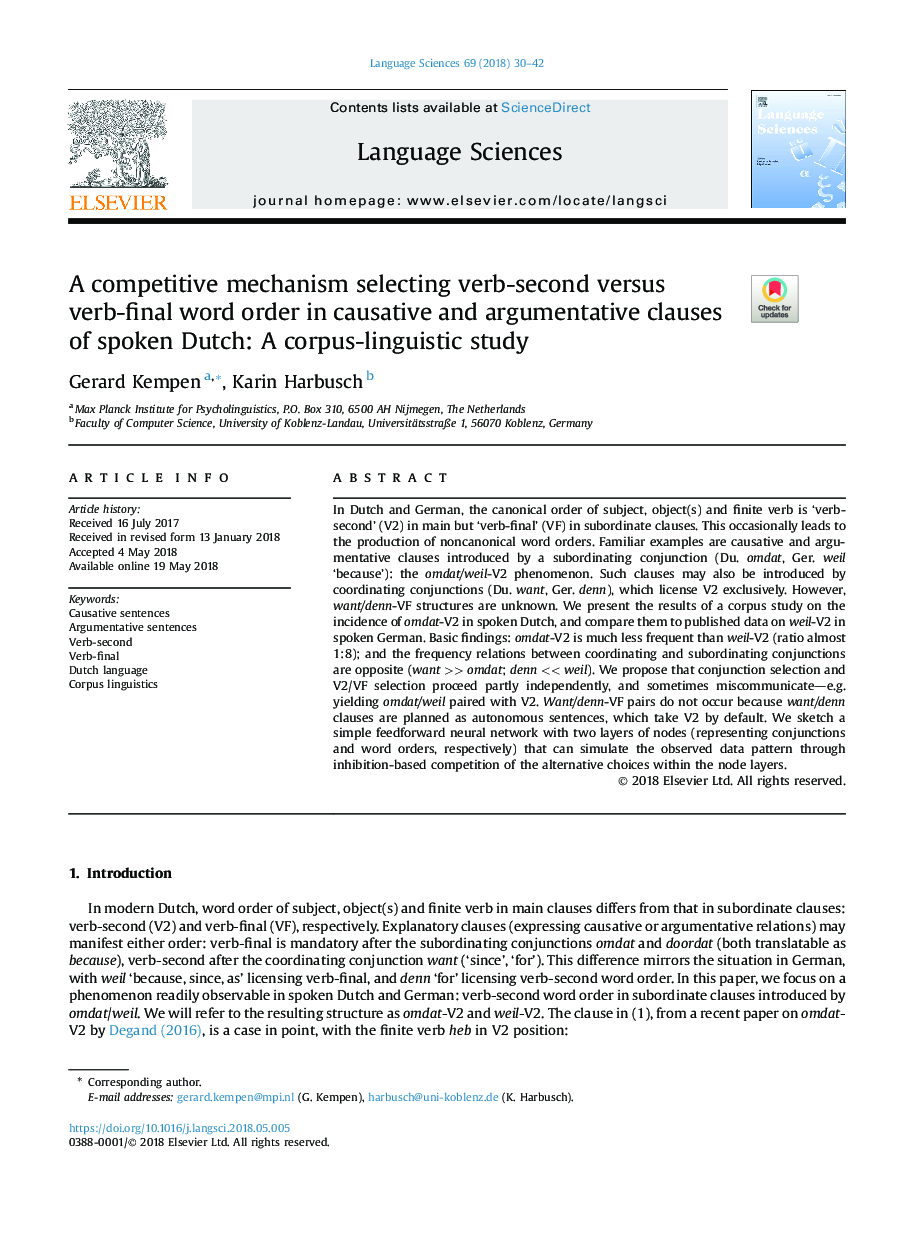| کد مقاله | کد نشریه | سال انتشار | مقاله انگلیسی | نسخه تمام متن |
|---|---|---|---|---|
| 8942550 | 1645097 | 2018 | 13 صفحه PDF | دانلود رایگان |
عنوان انگلیسی مقاله ISI
A competitive mechanism selecting verb-second versus verb-final word order in causative and argumentative clauses of spoken Dutch: A corpus-linguistic study
ترجمه فارسی عنوان
یک مکانیسم رقابتی که عبارت "فعل دوم" و "اصطلاح نهایی" را در مقوله های انگیزه و استدلال هلندی صحبت می کند: یک مطالعه کورپولنگولوژیک
دانلود مقاله + سفارش ترجمه
دانلود مقاله ISI انگلیسی
رایگان برای ایرانیان
کلمات کلیدی
جملات علمی، احکام استدلال، فعل دوم، فعل نهایی، زبان هلندی، زبانشناسی سازه،
موضوعات مرتبط
علوم انسانی و اجتماعی
علوم انسانی و هنر
زبان و زبان شناسی
چکیده انگلیسی
In Dutch and German, the canonical order of subject, object(s) and finite verb is 'verb-second' (V2) in main but 'verb-final' (VF) in subordinate clauses. This occasionally leads to the production of noncanonical word orders. Familiar examples are causative and argumentative clauses introduced by a subordinating conjunction (Du. omdat, Ger. weil 'because'): the omdat/weil-V2 phenomenon. Such clauses may also be introduced by coordinating conjunctions (Du. want, Ger. denn), which license V2 exclusively. However, want/denn-VF structures are unknown. We present the results of a corpus study on the incidence of omdat-V2 in spoken Dutch, and compare them to published data on weil-V2 in spoken German. Basic findings: omdat-V2 is much less frequent than weil-V2 (ratio almost 1:8); and the frequency relations between coordinating and subordinating conjunctions are opposite (want >> omdat; denn << weil). We propose that conjunction selection and V2/VF selection proceed partly independently, and sometimes miscommunicate-e.g. yielding omdat/weil paired with V2. Want/denn-VF pairs do not occur because want/denn clauses are planned as autonomous sentences, which take V2 by default. We sketch a simple feedforward neural network with two layers of nodes (representing conjunctions and word orders, respectively) that can simulate the observed data pattern through inhibition-based competition of the alternative choices within the node layers.
ناشر
Database: Elsevier - ScienceDirect (ساینس دایرکت)
Journal: Language Sciences - Volume 69, September 2018, Pages 30-42
Journal: Language Sciences - Volume 69, September 2018, Pages 30-42
نویسندگان
Gerard Kempen, Karin Harbusch,
